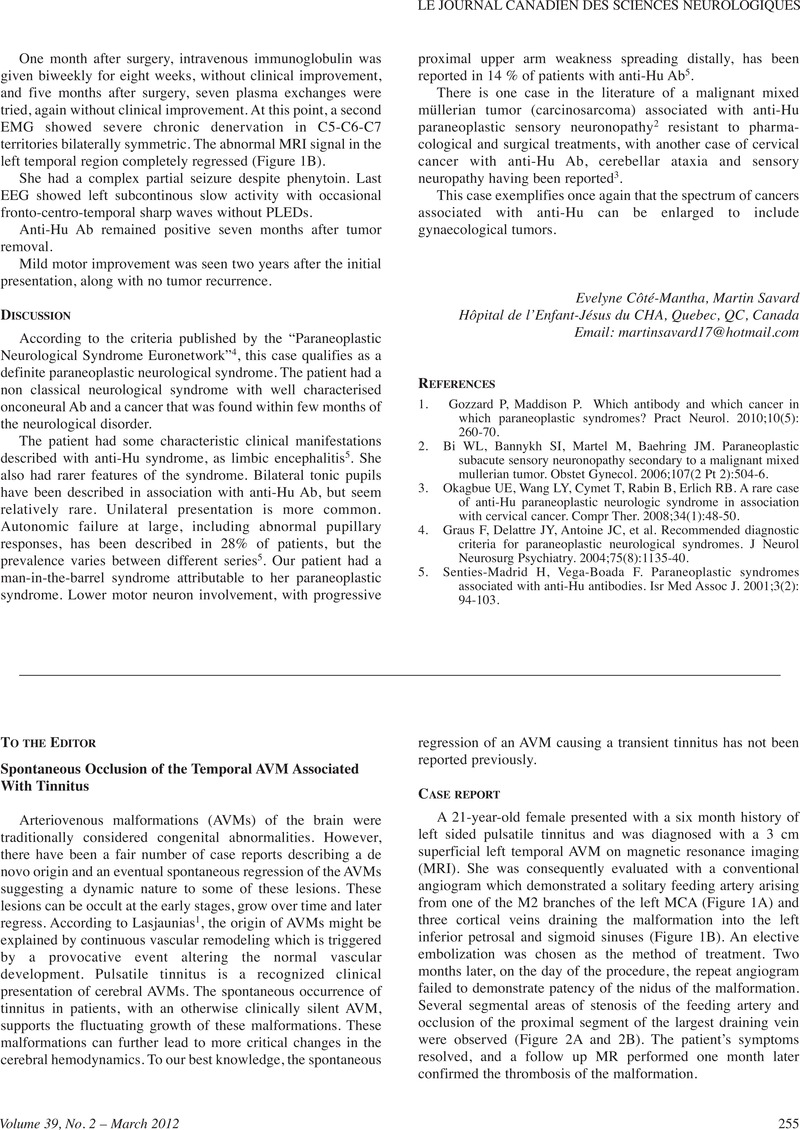Crossref Citations
This article has been cited by the following publications. This list is generated based on data provided by Crossref.
Liew, Jason A
Yang, Wuyang
Mashouf, Leila A
Li, Sean
Caplan, Justin M
Tamargo, Rafael J
and
Huang, Judy
2020.
Incidence of Spontaneous Obliteration in Untreated Brain Arteriovenous Malformations.
Neurosurgery,
Vol. 86,
Issue. 1,
p.
139.
Yindeedej, Vich
Duangprasert, Gahn
Noiphithak, Raywat
Nimmannitya, Pree
Punyarat, Prachya
Tantongtip, Dilok
and
Thamwongskul, Chatchai
2023.
Bleeding pediatric AVM with negative pre-operative angiography: the first case report.
Child's Nervous System,
Vol. 39,
Issue. 11,
p.
3327.





